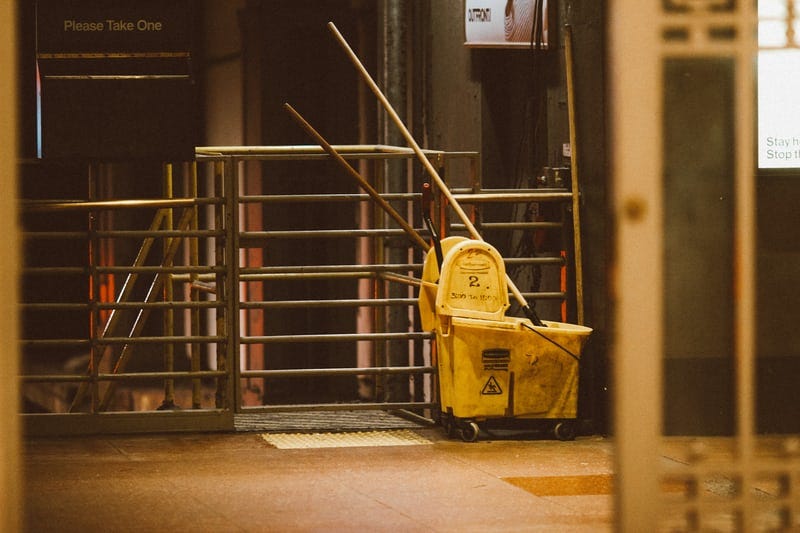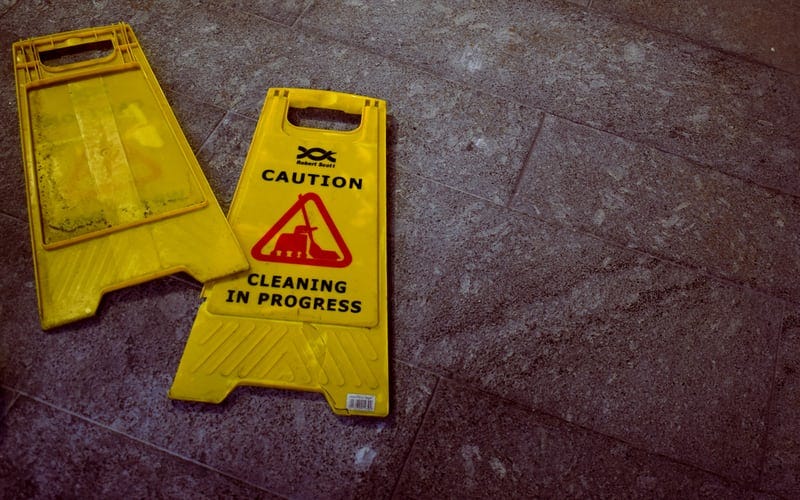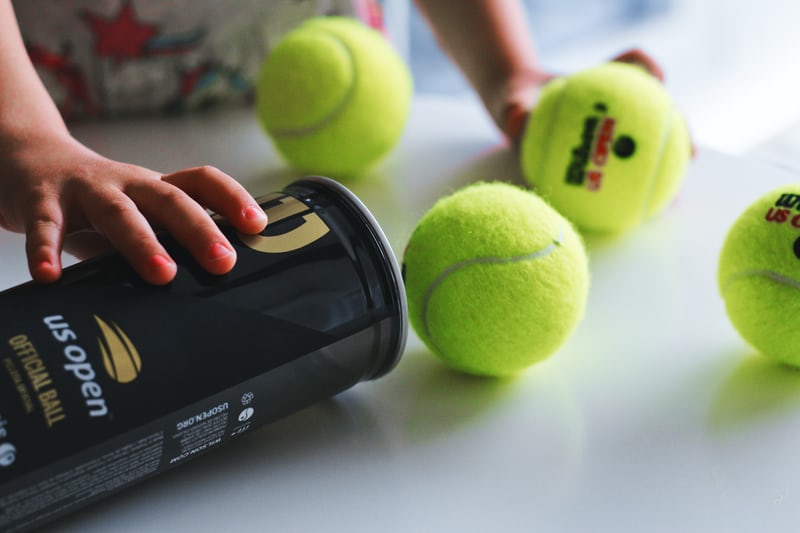The U.S. Open tennis tournament is by far my favorite event of the year and frankly the only one I end up attending. As a personal finance enthusiast, paying for experiences is harder than anything because there’s no immediate reward to certify I got my money’s worth.
Granted this is no way to live and something I’ve gotten better at training my brain at over the years.
Tennis is a sport for all ages and I’ve attended the U.S. Open tournament, besides last year due to the pandemic of course, with family, friends, acquaintances, colleagues and even their own clients for the past several years.
It is thrilling no matter who is playing at whatever level with no time crunch. At least that’s a way for me to know I’m getting my bang for my buck.
To me nothing compares to the U.S. Open.
For one, it is at the end of the summer when NYC is the most electric and two, the city has the best weather during the month of August. Not too cold not too hot. NYC is extremely bipolar.
So if you haven’t gotten a chance to, I would recommend chasing after the ball.
What’s the point of making money if you can’t spend it?
Of course you should know your limits but if you’ve been diligently saving this pandemic, paying off your dues and debts, maybe started a side-hustle or two, rekindled with family, built your nest egg, learned a new skill and maybe refinanced your home for a lower mortgage, you certainly deserve it by now.
Since this is a personal finance channel, you may be hissing at me for the cost and calling me entitled and a spoiled brat for attending such a luxurious event. Don’t worry, like most fans, I’m never in the mood to dish out $900+ for anything, especially seats in a stadium I can’t even get first row tickets to but this is a yearly exception something I plan for.
The exceptions we make once in a while turn into daily coffee runs that blow our buckets. Those are the purchases that haunt our banks accounts not the ones planned for that you know you deserve and spend no more on.
Experiences and memories cannot be replaced. Yes they can have a hefty price tag but some are worth it. When it comes to the Open, the base price isn’t usually final. Many people have their own strategies for getting cheaper seats from connections. They buy them for cheap at the start of the year and then re-sell them or get a whole first row or box for free because their company sponsors it. The U.S. Open is flooded with advertisers from banks to car companies. Many bankers take their clients out to a match and it’s all complimentary. They make money while saving money! What a deal.
Don’t assume people are better off than you. Life is unfair but you’re making it more unfair if you don’t bother to find the deal yourself. It’s always out there it’s just a matter of timing and persistence.
Also, if you don’t want a grandstand seat only able to watch one or two games per day, I would suggest for a group of 2+ to get grounds passes. They are the way to go as you can view as many matches and events as you want along with getting prime seats to practice courts and 10+ smaller courts to view up and coming rising stars and even the big names depending on the day of the tournament.
I’ve found over the years after attending 5 finals, watching them isn’t as exciting as touring the small matches throughout the draw leading up to the tournament. This year was truly ecstatic and the crowd was wild as ever. I’ve never witnessed so many youngsters such as Leylah Fernandez who beat Osaka (#1) to Carlos Alcaraz crushing Tsitsipas (men #3) in the earlier draw.
It’s a sight to see and if you want to be really frugal and save up for a purchase that you prefer to make elsewhere in your pandemic revenge plan the next few months, you can always tune into ESPN or the Tennis Channel all day for live coverage of the open!
Certainly not the same but will do.
So why do I bring all this up?

Behind the Scenes
Well, since we’re discussing the U.S. Open, let’s uncover what it’s really like to keep this magnificent event up and running. From the ball-kids to foodcourt, ticket-booth, safety/health producers to security, it takes a lot of painstaking hours and work to organize an event like this that takes exactly a year to plan ahead of time.
That got me thinking.
How much do the ball-kids, the ones who innocently stand in the corners of the court waiting and serving the professional tennis players their balls?
Not only immense training goes into getting them prepared to pick up the balls and speed sprint so the players don’t trip but the attention to detail and personality they must possess to keep the players at ease and not be a distraction are important as well.
That reminds me. What’s the coolest job you’ve ever had?
Let me guess. Most likely it was when you were younger?
Why?
Because those jobs tend to be more fun, easy going, with others, more labor intensive, have less responsibility and an allotted time commitment and then off for the school year. Over the years the ball-kids I’ve observed seem serious on court as it is their job but after getting the chance to speak with a few afterwards, they couldn’t be happier.
Maybe it’s part of their job!
You never know the real story until someone steps off the court or the job to discuss what it’s all about.
Don’t always trust Glassdoor — even the anonymous comments.
The U.S. Open generates roughly half a billion per event from fans willing to pay top-dollar to see the best tennis players in the world. Although top players from Federer to Williams are out, youngsters are coming in and defying the sport.
NYC couldn’t be a better place to celebrate. The energy is unbelievable and precautions regarding covid are taken very seriously. From daily vaccination checks to excellent food, NYC couldn’t be a better place to revenge spend from the pandemic if you’ve been diligently savings these past 15 months! Go big or go home for a bit. It doesn’t hurt to work hard party hard if you need to.

Stark Difference
Before we dive into the ball-kids’ earnings, we need to compare them to the real players of the game, the tennis stars. Now there is no doubt their salaries are obviously higher than majority of ours, let alone the ball-kids, yet when you think about it, the more the players earn as they are incentivized to compete, the more fans come to play and ball-kids surplus goes up. This doesn’t always happen in every market especially within the unicorn startup world but in the U.S. Open, it seems to work.
According to handy dandy Google, tennis pros earn annual salaries unsurprisingly only as high as $90k and low as $40k per year, not including endorsements, partnerships, affiliates, speaking events, guest appearances, etc. that tend to generate more. That’s not much when you factor in all of the hefty expenses.
Tennis players have massive transportation costs living in hotels for most of the year, a full-time coaching staff, psychological/medical help and enormous food costs along with a huge scare, no stable income touring 10 or 11 months out of the year to keep their ranking up.
Most athletes play for a few decades and then they are out.
Unless you are a one-shot wonder, don’t hurt anyone’s feelings, are always politically correct and liked by everyone, you can easily earn more not playing than when you are playing.
Currently Osaka, the highest paid female athlete is in that position. She earns roughly $50m per year from endorsements compared to only $2m from her tournaments while in the meantime taking a lengthy hiatus for a couple months on and off.
Short careers from celebrities to athletes pay big but are they worth it in the end?
Currently world number one, Ashleigh Barty from Australia who’s reportedly worth $23m hasn’t been at home in 15 months! That’s no way to live unless you are willing to pay the price now for luxury later. Who knows! Many of these athletes go broke later on.
Regardless, it’s mentally and physically tough to be an athlete and rest as an athlete. Days off don’t mean you will still get paid and practicing for your big match won’t guarantee you’ll win.
As anyone in the business of entertainment can attest to, as sports is a $620 billion dollar industry catered to fans, having to depend on audiences and the media requires luck and exceptional timing. It is extremely unstable and as we’ve witnessed throughout the pandemic, your career can disappear in an instant without a back up plan.
Now on the other hand while the players have far more costs to compensate for their intense level of playing, the ball-kids do not besides traveling costs to Billie Jean National Tennis Center in Flushing NY which seems to be out of the way of everything.
The ball-kids are responsible for chasing down forehands, rolling balls quickly to the server’s side and repeatedly running other random tasks. After training is complete they are ready to roll.
Drum roll please…. They are paid an hourly wage of about $11 according to CNBC.
This isn’t horrendous considering the federal minimum wage in NYC is exactly $11 but the USTA certainly could do better considering the U.S. Open’s revenue is roughly half a billion dollars each year.
The USTA brought in $320 million in 2019 with 90% from the U.S. Open and even last year with no fans generated $150 million. Not bad considering it was a deadly pandemic.
Nonetheless, the U.S. Open doesn’t have to worry. Rain or shine, pandemic or not they will keep on earning revenue while the ball-kids will eventually as well yet the players not so much as they are always trapped in income insecurity.
That comes with the profession.

The Case of the Janitor
One of the rules of thumb my dad taught me in life was to never judge a book by its cover or in short, never make assumptions. You never know how poor or well off someone really is because just by their job titles or clothes, it is deceiving.
As you’ve hopefully learned, perception is not reality and it took me years to believe that until it hit me. NYC is a prime example where what you see isn’t what you should believe. As a personal finance guru, I’ve always naturally been curious about breaking the money taboo and gender pay gap. I’m curious as to what my colleagues who do the exact same work earn around me.
Before we get into the surprising salaries for these certain jobs, let’s identify the lowest paying jobs and why they are so.
Here they are according to the Balance.com:
1: Cooks
2: Shampooers
3: Fast-Food and Counter Workers
4: Hosts and Hostesses
5: Amusement and Recereation Attendants
6: Cashiers
7: Pressers of Textiles, Garments and Related Materials
I would argue all of them can be elevated and completely depend on who you are serving, where you are located and the quality of your staff. If you are a waiter for a deserted restaurant in the middle of Joshua Tree serving tourists who only come in the winter, then you will probably be making below minimum wage and your employer cannot sponsor to pay for your health insurance but if you work in Harry’s, one of the oldest restaurants in NY that serves all of Wall Street and their precious clients generating a good few hundred thousand per night from too many cocktails, you most likely are earning a generous salary.
Good Talk
As an only child, I’ve always been more comfortable conversing with older people. Maybe I’m not alone.
Thanks to this, I would always strike up a conversation with anyone. In middle school I would casually interact with the elevator operator and his son and the sweet cleaning ladies from Mexico.
They told me stories about their hopes of working in America and how their kids fled on their own at age 12 to meet their mothers in Los Angeles eventually finding roots in NYC. I’m surprised their family moved here versus in California where Latinos make up 40% of the population. They made a bold move but it was certainly worth it with this competitive pay.
Of course in middle school, I could care less about salary but now that I’ve learned about the importance of negotiation and what it means to earn equitable pay, I couldn’t be more excited to dive deeper into it. Although I didn’t ask them their pay at the time, I did some research on nationwide salaries and discovered it isn’t so shabby.
Although the average for cleaners is $40k per year, it isn’t true for many. Cleaning is an essential business. It isn’t like politics or working in government where you can earn high pay once and done only able to stick around if you get voted upon every 4 years.
According to the EdWeek, twenty public-school janitors generate more than $140k per year which is far more than teachers and is part of the top 10% salary range at this point and I’m sure it’s not as grueling as 100 hour work weeks in a cubicle.
Same thing with elevator operators. Dependent on the location, average earners take home $40k per year yet with incredible health insurance benefits and retirement plans supported by their employers which are typically billion-dollar cash reserve institutions, hospitals, colleges, government, etc., overtime their pay goes up and a mechanic can make around $80k-$200k. It is an important duty that anyone can be a part of. No engineering or computer science degree required.
But isn’t that the case for a lot of things these days?
Is attaining tangible intellectual property online instead of in a classroom still the same?
Does it work and ultimately affect pay?
Apparently it does for millions of these blue-collar workers!
After all if you have the skills, does it matter where you got them from anymore?
It doesn’t seem like it!
Let me know in the comments what you think.
The truth is anyone can make a great living if they save more than they spend. It’s not rocket science but it feels like an impossible science experiment sometimes because it’s difficult than ever these days to find out what we’re getting ourselves into! Consumerism and advertisements are bombarding us 24/7. We feel we always need something new and could be making more somewhere else.
When comparing higher paying jobs to down to earth 9–5 ones, there are certainly more trade-offs you must make with a higher salary but at the end of the day many people aren’t willing to deal with them anymore as we’ve adjusted to working on our own schedule and valuing our health and time differently.
Whether you are a ball-kid at the U.S. Open this summer cashing in on some summer money or a full-time janitor at a public-school, keep doing what you are doing. We all must respect each other’s professions and never undermine our abilities just because someone may work in a laborious or tedious job you had as a kid.
Where you are now isn’t where you will be later on.
Working in a cubicle with a fancy title not being able to see your family for 17 hours a day and coming home drained isn’t an accomplishment.
Work smarter not harder.
Later on in life, you will look back and regret the things you didn’t do not the things you did do so make sure to take advantage of your employers’ benefits, weigh the additional costs to the job and prioritize your health because without it, no matter how high the salary is, it doesn’t justify without other factors working for you.

